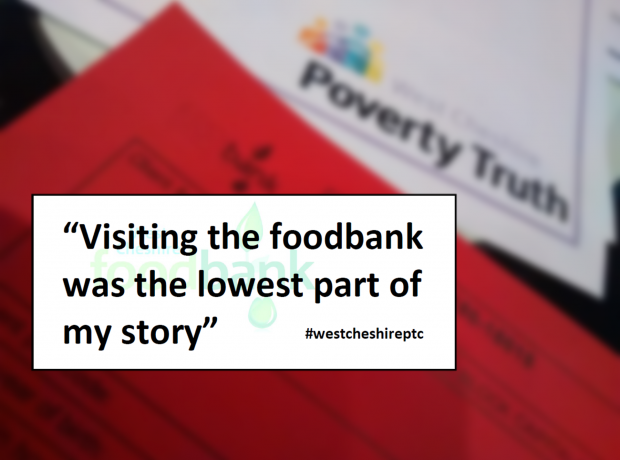Who are ‘the unemployed’? Statisticians would tell you that they are those 2.33 million people over the age of 16 not employed but seeking work, the 7.2% of the labour force who can’t get a job but are still looking for one. They are also those people who are relying on the safety net of government assistance. The 1.175 million people claiming Jobseeker’s allowance (JSA) who have to go to their local Jobcentre Plus to ‘sign on’ on a regular basis.
The unemployed and unemployment are not simply about statistics though. Some unemployed are represented as ‘strivers’ who are doing all they can to get a job, others as ‘genuinely unable to work’ and deemed to deserve our care and sympathy. Then there are those portrayed as ‘shirkers’, those who don’t want to work, who evade all responsibility.
Equally, some unemployment is seen as ‘long-term’ and ‘demoralising’, the kind that politicians treat, inaccurately, as a form of hereditary disease. Some unemployment is considered a condition of today’s labour market, especially for young people, who might flutter between short-term work, internships and benefits. There’s now a measurement for underemployment too, where workers are willing to give, or perhaps need, more hours than their employers are willing to offer.
The unemployed, and unemployment, are constructed and shaped through the language we use to describe and evaluate them. And this language operates through administrative practices that deal with those who claim benefits. It’s echoed in the way social assistance is provided. And it’s a language that is often used by government and the media, yet is open to popular reinterpretation, or even subversion by those who oppose it; Parasite Street, where the nation’s super-rich tax-dodgers reside, was a riposte to Channel 4’s Benefits Street programme, which vilified poor and working-class people.
Scrape beneath the categories of the unemployed and unemployment and you will find a deep, complex and contested history. What’s more, it’s a violent history. In Capital Marx’s chapter on ‘Bloody Legislation against the Expropriated’, recalled the whipping, branding and imprisonment of paupers and vagabonds in the 16th century.
Even though there is no more whipping, and the workhouses are National Trust monuments, to be visited with the family at the weekend, the vocabulary that relates to unemployment and its relief – dependency, discipline, deterrence, deservingness, etc. – remains prevalent. One might get the impression from today’s discourse in the welfare industry (and an industry it is now) that assistance is compassionate, with a focus on the ‘hardest to help’ and personalised interventions that nurture people back into work. But the reality can remain brutal: benefit sanctions, reliance on food banks, unpaid ‘mandatory work activity’ and the precarious nature of the ‘zero-hour’ job market into which many are pushed. The fact that we have left behind the dismal era of the workhouse shouldn’t obscure the genuine suffering that occurs under the modern welfare state.
So what can the history of the language of unemployment tell us?
Exceptional measures for exceptional groups
The description and evaluation of exceptional groups among the poor and unemployed is a good place to start. Such groups are evoked imaginatively to justify extraordinary measures. Portrayals of who they are, and how they behave, draw on visceral imagery.
Think of George Osborne’s benefit-scrounger next door, who is ‘sleeping off a life on benefits’ behind closed curtains. In a class-obsessed society we invent extra classes – a class apart from, or below others – to define the membership of these empirically indistinct groups.
Since the 1980s it has been the ‘underclass’. The permissiveness of the 1960s and decline of traditional, respectable social mores were said to have given way to a crime-fuelled, drug-addled ‘yob culture’. These descriptions reflected particular fears: the fear that authority was no longer respected; the fear that the patriarchal, nuclear family was disappearing and giving over to poor upbringing by lone parents. Many of these impressions and fears are still captured by descriptions of ‘chavs’ today, as Owen Jones has documented.
This is nothing new. In his surveys of the ‘London Poor’ in 1851 Henry Mayhew divided the population ‘according as they will work, they can’t work, and they won’t work.’ The efforts to map and measure poverty at the end of the nineteenth century by Charles Booth and Joseph Rowntree generated categories of the poor and unemployed in London and York respectively, the ‘lowest’ of whom were identified as ‘vicious, and semi-criminal’. In the same era, the economist Alfred Marshall chastised the ‘residuum’ as those who were ‘physically, mentally, or morally incapable of doing a good day’s work with which to earn a good day’s wage.’
Today the government identifies a range of groups for exceptional treatment, such as young ‘NEETS’ (those Not in Employment, Education or Training) or the 120,000 so-called ‘Troubled Families’. Official classification often comes with a kind of symbolic violence, as well as the more physical kind. The recipient might carry it with them long after the bureaucracy is done with naming them. The greatest shame of all under the poor law was to carry the status unto death and be buried with a pauper’s funeral, the descendant of which is the Public Health Funeral.
Isolating groups or classes of people allows for exceptional measures to be introduced to manage them. The impression is given that they will only respond to the harshest forms of encouragement, or that differential treatment is required because they are not like the rest of us. A sense of the ‘other’ is what allows for legislation that would be considered unjust if it were applied to everyone.
Unemployed bodies, unemployed minds
There have been different kinds of obsession with bodies and the health of populations associated with unemployment and its relief. Today the government takes the line that ‘good work is good for you’ as part of its justification for encouraging sick and disabled people into work.
There is a controversial system of computerized ‘work capability assessments’ that decide if you are fit for work or not and thus whether or not you can continue to claim disability benefits.
The nineteenth century workhouse system was also built on divisions of the claimant population into the fit or ‘able-bodied’ on the one hand, and the indolent, sick and aged on the other. After the New Poor Law came into force in 1834, the idea was to deter the able-bodied from claiming relief by making it conditional on entry into the workhouse. Workhouses were designed to deter all but the sick and desperate by making conditions inside less desirable than remaining outside. Paupers were made to wear prison-like uniforms, given bland food and set to work on monotonous tasks. Families were broken up and men, women and children were separated into different wards.
Later, in the interwar era, unemployment generated new fears about the ‘demoralisation’ and physical degeneracy of those not in work. It made men’s bodies ‘soft’. Work camps were introduced, which between 1929 and 1938 saw 200,000 young unemployed men engaged in such activities as stone-breaking, wood-chopping and preparing roads. Long-term unemployment risked rendering its victims ‘unemployable’, social psychological studies claimed, and encouraged a focus on the attitude, motivation and mental health of the unemployed. Women were often conspicuously absent from such studies and considerations, partially because it was considered that they had other forms of occupation and status to rely upon, such as domestic work.
Today psychology plays an important role in the delivery of services to the unemployed. The DWP is one of the largest employers of occupational psychologists in the UK. Positive psychology, from the mainstream Cognitive Behavioural Therapy (CBT) to the kooky Neuro-linguistic Programming, plays a role. Employment and training sessions have witnessed claimants being told that their main barrier to work is their lack of positive attitude, and have been submitted to bogus psychometric testing under threat of losing their benefits. There are questions over whether psychology is playing a coercive role in the welfare system today, as it becomes increasingly intertwined with the conditions under which people receive their benefits.
Judgements about unemployed peoples’ health and activity do not seem to have changed a great deal. They have often taken the form of condemning what the unemployed do in their leisure time: today’s familiar portrayal is of smoking, sofas and satellite telly. Recently, this has led to the idea of delivering benefits on a prepaid card that can’t be used to buy any ‘non-essential, desirable or damaging items’, such as alcohol. TV shows have entered people’s homes, and accompanied them to the supermarket, to pass comment on their shopping list in the name of fostering the ‘debate on benefits’.
Deservingness and its opposition
For a long time the key to moral judgment of those receiving relief and assistance has been whether they are ‘deserving’ or ‘undeserving’ of help. Today, this is evaluated in a variety of official ways; JSA claimants are expected to provide a record of evidence of their job-seeking efforts, which under the new Universal Credit system will entail proving up to 35 hours of ‘work preparation’ a week.
Deservingness is often presented as the preserve of those who have worked for a long time, but then suddenly fallen on hard times. The link between unemployment, deservingness and industriousness is complicated, however, by the fact that the majority of those living in poverty in Britain today are also in work.
At the end of the 19th century bodies like the Charity Organisation Society gave assistance only to the ‘industrious poor’ after subjecting them to protracted investigation. Such assistance was temporary, so as not to promote dependence, and it aimed to encourage qualities such as self-improvement, responsibility and a good work ethic. This infrastructure of charity persisted well into the 20th century. It operated with an understanding of deservingness based on qualities such as ‘good character’, ‘temperance’ (sobriety) and ‘providence’ (foresight). Promotion of teetotalism was advocated across the political spectrum and was at its height in the last twenty years of the nineteenth century.
Even when, in the first half of the 20th century, there was a move to rationalize the provision of relief and modernise the bureaucracy that dealt with the unemployed, judgements of deservingness did not disappear. They were just refashioned. And in periods of high unemployment these judgments created an acute sense of injustice. The National Unemployed Worker’s Movement (NUWM), a kind of union for the unemployed established in 1921, campaigned against the ‘genuinely seeking work’ clause and the Household Means Test of 1931, the latter of which saw government officials enter working-class homes to decide whether its occupants were impoverished enough to receive assistance.
The NUWM were clear in their opposition to benefit cuts and acted as a kind of advisory body to the unemployed who were attempting to negotiate the complexities of claiming. Rather than unemployment itself, they saw the way in which the unemployed were treated by the government as the problem, particularly the harsh conditions for receiving benefits and the effects of claimants being disqualified from the benefit rolls.
Today there are a number of movements contesting the government’s welfare reforms: Boycott Workfare and Disabled People Against the Cuts (DPAC) are at the forefront. They operate online, on social media platforms, and organise demonstrations and pickets against the DWP and its private contractors, such as ATOS and A4e. Campaigns are ongoing against welfare-to-work schemes, where claimants are expected to work without wages; against the work capability assessment for sick and disabled claimants; and against the effect of benefit sanctions, which are being issued at an average rate of 74,000 a month. But some charities have been brought into the delivery of welfare-to-work programmes. The Salvation Army frames its contribution today in terms of its history as a charitable provider of assistance established in the late 19th century.
Using the history of unemployment today
What then is the point of studying the history of the language of unemployment? Perhaps it’s a matter of revealing the undercurrent of disdain that is directed at claimants today and how much of this is rooted in an attitude towards the unemployed that is deep set and ultimately deeply prejudiced.
And as with any bigotry, showing the way language provides a shorthand for detrimental stereotyping might give some cause for reflection. Are we really faced by the same economic circumstances that existed 100 years and more ago? Have our public ethics not developed since those times?
With the historical knowledge of how unemployment and the unemployed have been constructed through language, policies might be challenged in general and specific ways. The problems people experience when unemployed are not simply of their own making, as the rhetoric would have it, but are structural features. They reflect the uneven developments of the economy, so that in some places since the financial crisis as many as twenty people or more have been chasing each job vacancy. The possibility of resisting punitive sanctions, justified on generic categorisations based on illegitimate stereotypes, might also be envisioned by looking at the efforts of old institutions such as the NUWM. Coupled with evidence that sanctions are ineffective when it comes to achieving their purported aims, a powerful challenge to those who impose them could be made.
And in advancing a positive picture of what a prosperous Britain might look like it may be a case of getting beyond both the statistics outlined at the beginning as well as the same old prejudiced vocabulary surrounding unemployment. When we hear that ‘X number of people are back in work’, and that ‘work is good for you’, we’re told little of what that working landscape looks like and whether it really is good for us.
Contesting the language used to stigmatize the unemployed is one step towards thinking about an economy that doesn’t polarise society so extremely. Thinking about what it is that we value in work, rather than simply saying having a job is good and not having one is bad is another step.
Read Nick Taylor’s top 10 books on the history of unemployment …


